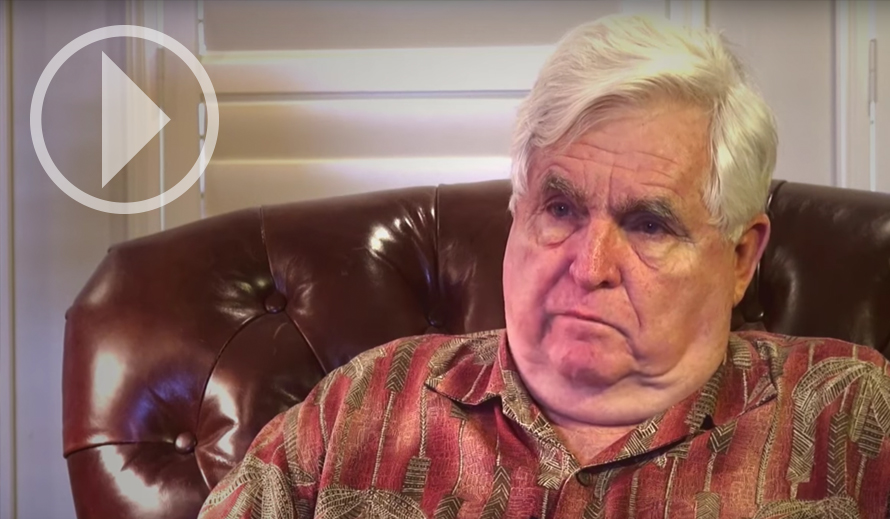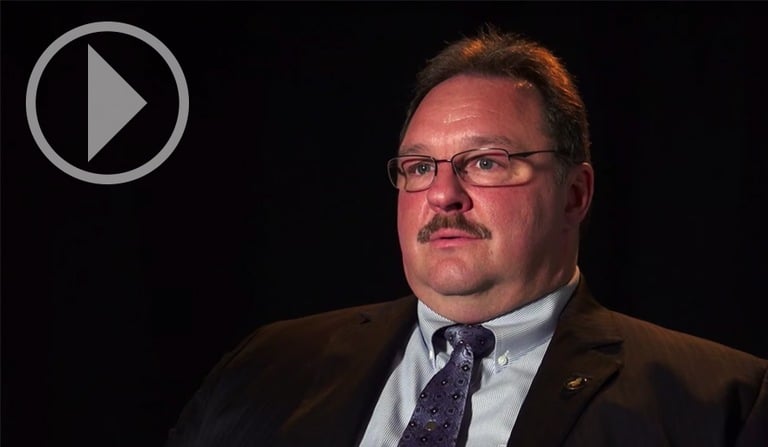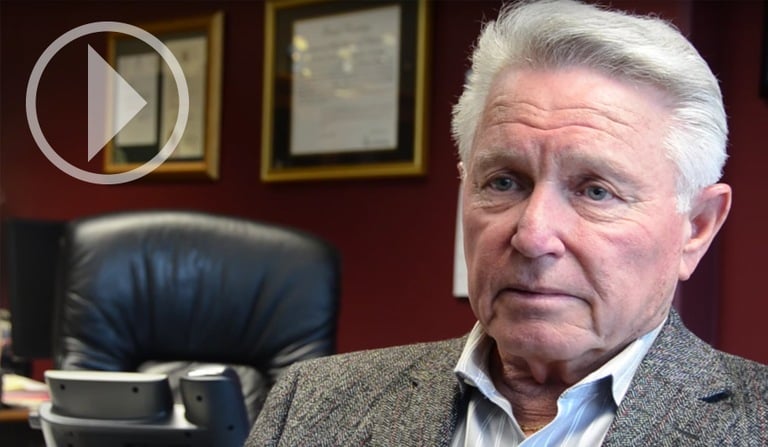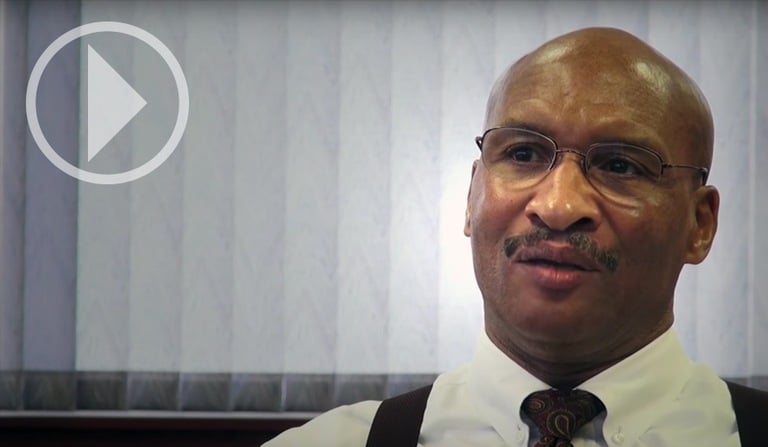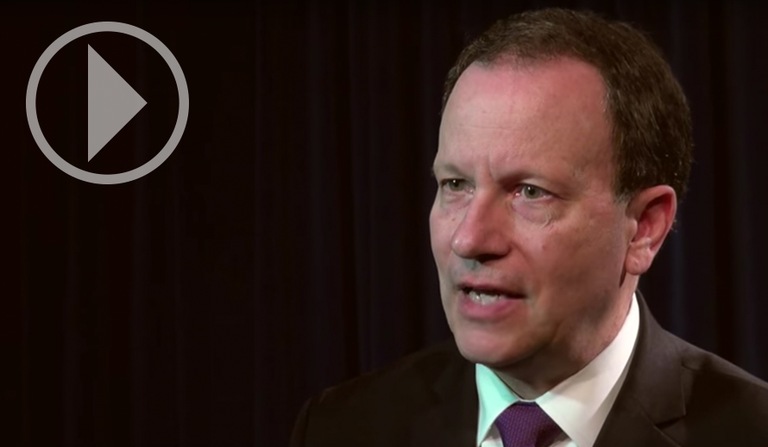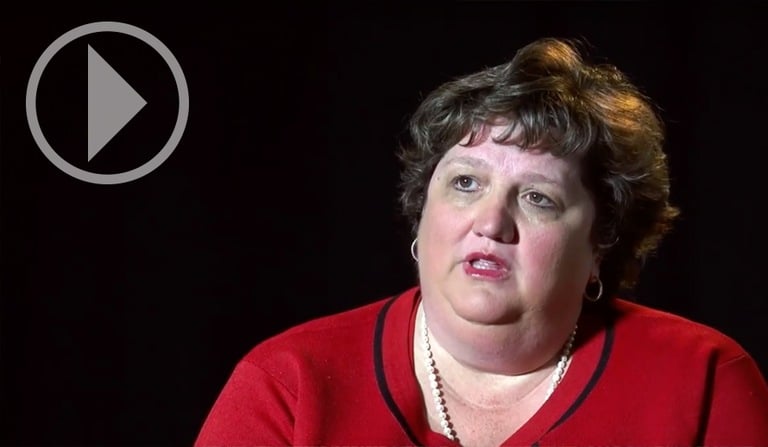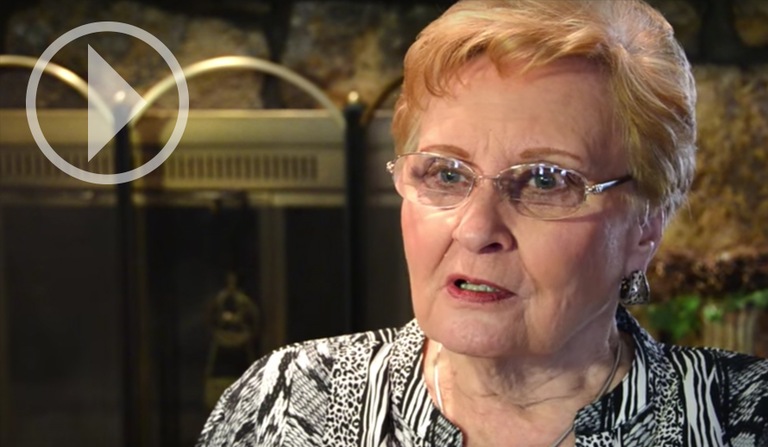
The Oklahoma City Bombing
20 Years Later
As Oklahoma City and the country prepare to mark the 20th anniversary of the Alfred P. Murrah Federal Building bombing on April 19, 1995, fbi.gov looks back at the deadliest act of homegrown terrorism in the nation’s history through the eyes of special agents who were there and a survivor who continues to honor the victims by sharing her remarkable story.
The Ryder truck packed with nearly 5,000 pounds of explosives that Timothy McVeigh parked in front of the Murrah building that Wednesday morning killed 168 people, among them 19 children—most of whom were in the building’s daycare center. The youngest victim was 4 months old. Hundreds of all ages were injured.
In a matter of seconds, the blast destroyed most of the nine-story concrete and granite building, and the surrounding area looked like a war zone. Dozens of cars were incinerated, and more than 300 nearby buildings were damaged or destroyed. Immediately, the FBI turned its full attention to Oklahoma City. The OKBOMB investigation, as it became known, remains one of the largest and most complex cases the FBI has ever undertaken.

The bombing of the Alfred P. Murrah Federal Building in Oklahoma City on April 19, 1995 was the deadliest act of homegrown terrorism in U.S. history, resulting in the deaths of 168 people. In a matter of seconds, the blast destroyed most of the nine-story building, incinerated nearby vehicles, and damaged or destroyed more than 300 other buildings.
‘I Never Thought it Was a Gas Explosion’
When the bomb went off, Special Agent Jim Norman was at his desk at the FBI’s Oklahoma City Field Office, located about five miles northwest of the Murrah building. “It shook everything in the office,” Norman recalled. “Files fell off people’s desks where they were piled up.” One of the Bureau’s senior bomb technicians, Norman, now retired, rushed into his supervisor’s office. “We looked toward downtown Oklahoma City and you could see a tan cloud of debris rising from that area. I told my supervisor, ‘I think a bomb detonated downtown. We need to go down there.’”
In his car on the way to the scene, a local radio station was reporting that the blast might have been caused by a natural gas explosion, but in his gut, Norman knew it was a bomb from the sound he had heard. “I never thought it was a gas explosion,” he said. Less than 15 minutes after the blast, he parked two blocks away from the Murrah building. It was as close as he could get because of all the debris.
“I ran over to where all the smoke was,” he said. “As I was heading that way, a number of people were running in the opposite direction. I approached the north entrance and couldn’t believe what I was seeing. The whole front of the building had been torn off. On the left side of the building, in some places the flooring had been torn away all the way to the back wall. That building was 200 feet wide and 80 feet deep.”
Standing before the massive, tangled pit of debris and bodies, Norman began thinking like the seasoned bomb tech and investigator that he was. And a thought occurred to him: “‘Our lives have changed forever,’—because I knew the magnitude of what we were facing.”
‘Where Are You Guys?’
Florence Rogers, head of the Federal Employees Credit Union, was in her office on the third floor of the Murrah building that morning. Seated around her desk were eight credit union employees, some of whom Rogers had known and worked with for decades. Although they were having a business meeting, spring was in the air, and there was talk of the women’s colorful seasonal dresses.
When the bomb went off at 9:02, Rogers was thrown backward onto the floor, her desk and other office items landing all around her. When she looked up, every one of her colleagues had vanished. “I started hollering, ‘Where are you guys? Where are you guys?’”
In the next moments, before building and car alarms triggered by the blast began to howl, before fire engine and police sirens wailed, and before cries rang out from the trapped and injured, Rogers experienced an “eerie silence.” Alone on a narrow ledge—all that was left of her office floor—below which was a deadly, open pit, she wondered where her colleagues had gone. She wondered why she could see daylight where walls and ceilings should have been. And later, after being helped to safety, she would wonder at the miracle of her own survival on a day when so many had perished.
‘You Immediately Snapped Your Head Toward Town’
Special Agent Barry Black was at Tinker Air Force Base that morning tracking a fugitive in a stock manipulation case he had been working on for four years. Black was trained as an accountant, but since joining the Bureau seven years earlier, he had become a sniper on the SWAT team and had deployed to the Waco standoff in 1993—the event that had galvanized Timothy McVeigh’s hatred of the federal government. Black was also the newest bomb tech in the Oklahoma City Division.
He and his partner had received a tip that their white-collar fugitive was on the military base, and as they waited in their car for him, the bomb went off.
They were seven linear miles from the Murrah building. “I remember it was very loud and you immediately snapped your head toward town,” he said. “It was loud enough where you could see the people outside hunker down because of the noise.” It was later determined that the blast registered 3.2 on the Richter scale–very much like an earthquake.
After a discussion with his supervisors, Black, who is currently approaching his 27th year with the Bureau, drove to the blast site to help determine what had happened. When he saw the destruction at the Murrah building, there was an even greater urgency to his mission, because his wife, Kelly, was a federal employee who worked there. In the days before most people had cell phones, he said, “I wasn’t sure where she was.”
About 90 minutes later, Black’s wife was able to leave a message on his pager that she was safe. She and two colleagues had emerged from the Murrah building garage at 9 o’clock and had driven in front of the Ryder truck on their way to the highway. Black understood that had his wife been delayed by a mere two minutes, she never would have survived.
Misguided Revolutionary
Timothy McVeigh targeted the Murrah building largely because it was full of U.S. government workers like Barry Black’s wife. Fourteen federal agencies had offices there, and 98 of the victims worked for the federal government.
McVeigh, a decorated Army veteran, believed the government was attacking Americans’ personal rights and freedoms. His anger hardened on April 19, 1993, when 76 men, women, and children died in a fire during an armed standoff with federal agents in Waco, Texas. Many mistakenly believed that federal officers had set the fire. McVeigh, who visited Waco during the standoff, said that the government had declared war against the American people. He planned to fire the first shot in a new American revolution.
‘Jump In and Work as Hard as You Could’
Bob Ricks was the special agent in charge of the FBI’s Oklahoma City Division in 1995. On the morning of April 19, he and many of his law enforcement colleagues were signed up for a charity golf event about 40 miles east of downtown sponsored by the Oklahoma State Bureau of Investigation. His counterparts from the Secret Service and U.S. Marshals Service were there as well.
“We were just getting ready to tee off, and all of a sudden everyone’s phones started going off. I got a call from my secretary saying that there had been some type of a bombing down at the Murrah Federal Building—didn’t know how bad it was.”
Ricks got back to Oklahoma City in a hurry and remembers one of his assistants asking him, “‘Bob, you know what today is?’ At first I didn’t know what he was talking about. And he said, ‘Today is April 19,’ which was the last day of the standoff at Waco. That immediately set off an antenna that we probably had a reprisal that had taken place as a result of the Waco situation.”
With the bomb squad and other resources already dispatched to the scene, Ricks set about standing up a command post. There was never a question that the FBI would take charge of the case.
“My first job was to get together with the leadership of the fire department and the police department and make sure we had a unified command,” Ricks said. He arranged a meeting with the chiefs of the Oklahoma City police and fire departments outside what was left of the Murrah building, which looked as if it might topple at any moment.
Ricks got back to Oklahoma City in a hurry and remembers one of his assistants asking him, “‘Bob, you know what today is?’ At first I didn’t know what he was talking about. And he said, ‘Today is April 19,’ which was the last day of the standoff at Waco. That immediately set off an antenna that we probably had a reprisal that had taken place as a result of the Waco situation.”
With the bomb squad and other resources already dispatched to the scene, Ricks set about standing up a command post. There was never a question that the FBI would take charge of the case.
“My first job was to get together with the leadership of the fire department and the police department and make sure we had a unified command,” Ricks said. He arranged a meeting with the chiefs of the Oklahoma City police and fire departments outside what was left of the Murrah building, which looked as if it might topple at any moment.
After the meeting, he recalled, “We all went back to doing what we were doing, and I kind of stood there in front of that building by myself for a while, and all I could do is think to myself, ‘Lord this was overwhelming, and where do you start?’ And I basically said a prayer. ‘Obviously I can’t make it right, but hopefully we can find justice in this process.’”
By mid-afternoon, a telephone company provided space near the blast site for a command center, complete with 190 phone lines. The investigation was in full swing. FBI photographers took pictures, bomb techs looked for secondary explosives, SWAT provided security, evidence technicians fanned out looking for evidence, and agents interviewed witnesses and began to track down information and send leads to other FBI offices. At FBI Headquarters in Washington, officials began diverting resources to help the 120 special agents based in Oklahoma City.
Within hours of the bombing, the FBI established a command center a few blocks from the Murrah building to coordinate recovery and investigative efforts and to integrate the local, state, and federal agencies that were assisting. “The first day or so, it really was chaotic,” said Bob Ricks, then special agent in charge of the FBI’s Oklahoma City Division. “What you are trying to do is bring some sense of order to the chaos.”
At the command center, Ricks said, “The first day or so, it really was chaotic. What you are trying to do is bring some sense of order to the chaos. We started immediately trying to work together.” The command center essentially became another FBI field office. “From the basic infrastructure of getting telephones together, of trying to get together a records management system, of coordinating with the fire department to get our evidence response teams on the ground, to seal off the inner perimeter, to have an outer perimeter, to have control of the press as to how we were going to handle messaging. And so you really start from the ground up. Building this infrastructure, that was necessary, and at the same time integrating all of these different agencies—local police, local fire, local sheriffs, federal agencies—into this process.”
“I think we all understood the enormity of what it was,” he added. “To keep your sanity, the best thing you could do was jump in and work as hard as you could to try to get this thing solved.”
The Path to McVeigh
Evidence quickly led to Timothy McVeigh. Investigators determined the explosion was caused by a truck bomb and collected vehicle parts with telltale bomb damage. A vehicle identification number led to a Ryder rental facility in Junction City, Kansas. On April 20, the FBI released a sketch of the man who rented the truck. The owner of the Dreamland Motel in Junction City recognized him as a guest registered as Timothy McVeigh.
A search of police records showed that McVeigh was in the Noble County jail in Perry, Oklahoma. A state trooper had stopped him shortly after the bombing because his car was missing a license plate. He arrested McVeigh for carrying a concealed firearm, and McVeigh was still in custody when the FBI called.
McVeigh used a Michigan address when he checked into the Dreamland Motel. He listed the same address—which belonged to a brother of Terry Nichols—when he was arrested shortly after the bombing. Terry Nichols was one of McVeigh’s Army buddies also known for his anti-government sentiments, and the investigation showed that Nichols helped McVeigh buy and steal the material for the bomb and helped mix the ingredients.
Timothy McVeigh was arrested 90 minutes after the bombing when an alert trooper noticed that his vehicle (top left) did not have a license plate. The axle from the truck bomb (top right) contained an identifying number (bottom right) that was traced back to the Ryder truck McVeigh rented in Kansas. Special Agent Barry Black (bottom left) inspects parts of the Ryder truck that were collected as evidence, which are now archived at the Oklahoma City National Memorial & Museum.
Before the bombing, McVeigh spent time in Arizona with Michael Fortier, another Army friend, where he shared his plans and described how he would place the barrels of explosives in the truck. To help finance the plot, Fortier sold guns that McVeigh and Nichols had stolen.
Investigators discovered plenty of other evidence. The clothes McVeigh was wearing when he was arrested—along with a set of earplugs in his pocket—tested positive for chemical residue used in the explosive. Jim Norman said of McVeigh’s clothes: “When we sent that clothing back to the FBI Laboratory and they did a chemical analysis test, they determined that he was basically the explosive equivalent of a powdered sugar donut.”
McVeigh’s fingerprints were also found on a receipt at Nichols’ home for 2,000 pounds of fertilizer used to make the bomb. Other evidence linked McVeigh and Nichols to each other and to different elements of the crime.
No Stone Unturned
While the OKBOMB investigation quickly turned to McVeigh, Nichols, and Fortier, the FBI initially had no idea how many people were involved. In 32 months, the Bureau logged more than 1 million hours of investigative work through the OKBOMB Task Force. During that time, investigators conducted more than 28,000 interviews, followed more than 43,450 investigative leads, collected nearly 3.5 tons of evidence, searched 1 billion records in 26 databases, and reviewed more than 13.2 million hotel registration records, 3.1 million Ryder truck rental records, and 682,000 airline reservation records.
In August 1995, McVeigh and Nichols were charged with the same 11 federal crimes:
- Conspiring to use a weapon of mass destruction to kill people and destroy federal property;
- Using a weapon of mass destruction that caused death and injury;
- The malicious destruction of federal property by explosives; and
- Eight counts of first-degree murder of federal law enforcement officers.
A federal jury found McVeigh guilty of all counts on June 2, 1997. He was executed on June 11, 2001. A different jury found Nichols guilty of conspiracy and eight counts of manslaughter on December 23, 1997. He was sentenced to life in prison. Fortier testified against McVeigh and was sentenced to 12 years in prison for failing to report the planned attack and for lying to the FBI.
‘The System Worked as it Should’
“The whole event was absolutely senseless,” Barry Black said. “I have given a lot of presentations at various schools and universities, and depending on the age of the folks, they always want to know, ‘Why did it happen?’ or, ‘Why did it happen here?’ If the goal was to overthrow the government or change the government, well, in our country you do that every four years—peacefully. Power changes hands. This didn’t work out as McVeigh and Nichols had hoped it would.”
Black is satisfied with the soundness of the American judicial system. “I’m proud that the system worked as it should,” he said. “The subjects were caught, the evidence was collected and presented. The jury heard it and made its decision, and the law was carried out. So regardless of the scale and size of an event, it can be addressed and handled appropriately.”
In the end, despite the evil that some individuals are capable of, Black believes “good folks tend to prevail.”
Bob Ricks, too, is proud of the OKBOMB investigation. “I think it’s one of the finest hours in the history of the FBI,” he said, adding, “If you talk to those in the community around here, the FBI probably has one of the best relationships with any city in the country. Part of that is us all working together on the bombing and feeling a sense of accomplishment that we were able to put this all together in a very successful fashion.”
Jim Norman, one of the first FBI agents to arrive at the Murrah building after the explosion, was assigned as the lead investigator for OKBOMB. “I am very proud of the work that everybody did,” he said. “We had all these people that came together, and they did the very best they could.” He added that the bombing still represents a defining moment for Oklahoma citizens. “When you try to talk about something that happened, that was before the bombing or that was after the bombing. It’s a measure of time like BC and AD.”
The current FBI special agent in charge in Oklahoma City, James Finch, agrees. “One of the things you become acutely aware of,” he said, “is that you can talk to a small child or a very elderly person in Oklahoma, and what you will find, even though their way of expressing it will be vastly different, is they will have an awareness of the bombing. If it’s a child and they weren’t born at that time, it’s almost like it was passed on.” Through school programs and visits to the museum and memorial site, he explained, “They know it’s a part of their existence as Oklahomans.”
Finch, originally from Nebraska but who now calls Oklahoma home, pointed out the resiliency of residents who responded to the bombing with a can-do attitude and heartfelt appreciation and support for all those who came from out of town to help. That collective good will became known as the Oklahoma Standard.
‘Enormous Generosity and Kindness’
Dr. William Fabbri is a medical doctor and the director of the operational medicine program at the FBI. At the time of the bombing, he was not an FBI employee. He was an emergency medical physician working in a trauma center in Baltimore, Maryland, and he was also a member of the urban search and rescue program administered by the Federal Emergency Management Agency. Fabbri and other doctors teamed with firefighters to form collapse rescue teams.
Although the team’s primary mission was to aid with natural disasters, not manmade ones, they were called to Oklahoma City after the bombing. “I don’t think any of us ever thought we’d be involved with a crime scene or an incident of this magnitude,” Fabbri said. But 46 hours after the explosion, he got a firsthand look at the devastation wrought by domestic terrorism.
“It was an awful, horrific event,” he said, “but the response of the people of Oklahoma and Oklahoma City was absolutely phenomenal.” Fabbri’s experience, like those of so many first responders, speaks volumes about the Oklahoma Standard.
“On the first day of working, all of sudden we have civilians being escorted in by law enforcement, offering food, and we have representatives from the cellular companies handing us these big, brick-like cell phones that you had back in '95—because not everyone had one in those days—and saying, ‘Use these for whatever you need them for, and we will be by periodically to change out the batteries.’”
After his first 12-hour shift inside the Murrah building, Fabbri joined many of the responders who were walking back to where they were staying. “What started to happen over a period of the first few days,” he said, “is that when we exited the security cordon, there were people waiting to greet us, talk with us, and thank us. And the longer we were there, the more of that there was.”
The first responders and investigators learned they could always count on residents preparing food for them—available at any time of day or night, since work went on at the site around the clock.
“After a few days,” Fabbri said, “you learned to be very careful about comments in public about things that you didn’t have.” A dog handler, for example, was approached by a local resident who casually asked what kind of food the dog ate. “Within a very short time, the command post called and said, ‘There are 40 bags of dog food here for your team.’”
Immediately after the explosion, FBI personnel were dispatched to the Murrah building to begin the painstaking process of collecting evidence, even as firemen and other first responders worked to recover victims and stabilize the area. A collapse rescue team from Maryland (bottom right) was one of many teams from around the country to offer assistance after the bombing.
One night waiting in line for dinner, Fabbri commented that he should have brought a pair of sneakers with him—he had only packed two pairs of work boots. A few hours later, “someone was walking around trying to find the firefighter who needed sneakers. Someone had gone to a shoe store and showed up with a bunch of sizes, and it was really remarkable. The people were so gracious and willing to help.”
That fact was all the more amazing considering that the majority of Oklahoma City residents were either victims of the bombing or had friends or family who were victims. “It was a fascinating duality between this enormous generosity and kindness of the people and this tremendous sadness and pain that they were going through,” Fabbri said, “and the two were connected. Partly as the result of that, a bond developed between the rescuers and the people of Oklahoma City that I suspect still exists to this day.”
Until the bombing, Fabbri had never considered a career with the FBI. Three years later, he joined the Bureau. “My first day,” he recalled, “my wife gave me a photograph of what is now called the Survivor Tree, which is immediately across the street from the north side of where the Murrah building stood. If you look at video from that time, there is a whole parking lot full of cars that are on fire, and the tree is actually in that parking lot. It was a surprise to the locals that the tree wasn’t destroyed, and it became a sort of talisman. The day I started working here, my wife gave me a framed picture of the tree with a quotation that basically says that experiences like this tend to concentrate the mind on every good thing. And it’s on the wall right next to my desk.”
‘It’s About Remembering’
Today, on the site of what was once the Murrah building, there is a fitting memorial and museum honoring the significance of that tragic day.
“The memorial is really built to remember those who were killed and those who survived and those who were changed forever,” said Kari Watkins, executive director of the Oklahoma City National Memorial & Museum. “One of our missions was to build a place that would teach the moral of the story and the tenderness of the response.”
“A building was attacked to try to defeat the government,” she explained, “and what happened was a unity like none we have seen. People came together and worked together and said, ‘The government will survive.’ And after two days, the federal credit union reopened and federal agencies reopened, and that’s a part of the story that we want to retell: Even though people try to bring down the very government we believe in, we will survive, and it will be that same government that will defend the criminals and prosecute the criminals at the same time. And that’s a pretty remarkable story.”
In Their Words
Kari Watkins
Executive Director, Oklahoma City National Memorial & Museum (Transcript/Download)
The Oklahoma City National Memorial & Museum was dedicated on April 19, 2000, five years to the day after the bombing. “The memorial is really built to remember those who were killed and those who survived and those who were changed forever,” said Executive Director Kari Watkins. Two towers on either side of a reflecting pool where the Murrah building stood show the time immediately before and after the explosion. In the museum, visitors can see a room of twisted metal and concrete fragments left untouched after the bombing, along with a variety of interactive exhibits. In the memorial area, there is a chair for each of the 168 victims. Between the memorial and museum stands the Survivor Tree, which survived the blast and subsequent fires and symbolizes the notion that good will always triumph over evil.
Watkins added that the museum and memorial teach each new generation about the bombing and the response to it so that future generations are less likely to repeat the same mistakes. “This place is as relevant today as it was 20 years ago,” she said. “It’s about remembering.”
‘The Whole World Was Touched’
Perhaps as much as anyone, Florence Rogers symbolizes the need—and the duty—to remember.
The former head of the credit union, who survived while the eight women in her office only a few feet away were killed, embodies the strength, spirit, and good will that give life to the concept of the Oklahoma Standard.
She tells her story as way to honor the dead and to ensure that people will remember the good that came from the bombing as well as the tragedy. “The whole world was touched by what happened in Oklahoma,” she said.
“I had 32 full-time employees. I lost 18 of those 32; several of the others were seriously injured. Those 18 that I lost had worked for me 128 years total tenure. They were like my daughters, some of them,” she said. “It hurts to see their families, and here I am having great-grandbabies, and those families won’t ever have that opportunity. I soothe myself, I guess you’d say, by saying that God was not ready for me that day.”
“There’s not a day goes by that I’m not reminded of it,” Rogers said of the bombing, but remembering and telling her story is a way to give back to the community, “and I find a lot of healing in doing that.” She added that it’s “rewarding to see the family members. I remember when I got a call from one of the mothers who had lost her daughter, and she said, ‘Florence, I’m so glad that you made it out of there.’ And I started sobbing, because she gave it all, and she was glad that I had made it out.”
One of the most important lessons Rogers learned, she said, “is how short life can be. My advice is, don’t ever miss an opportunity to tell those that you love that you love them, because you never know when you might not come home from that ordinary day.”


